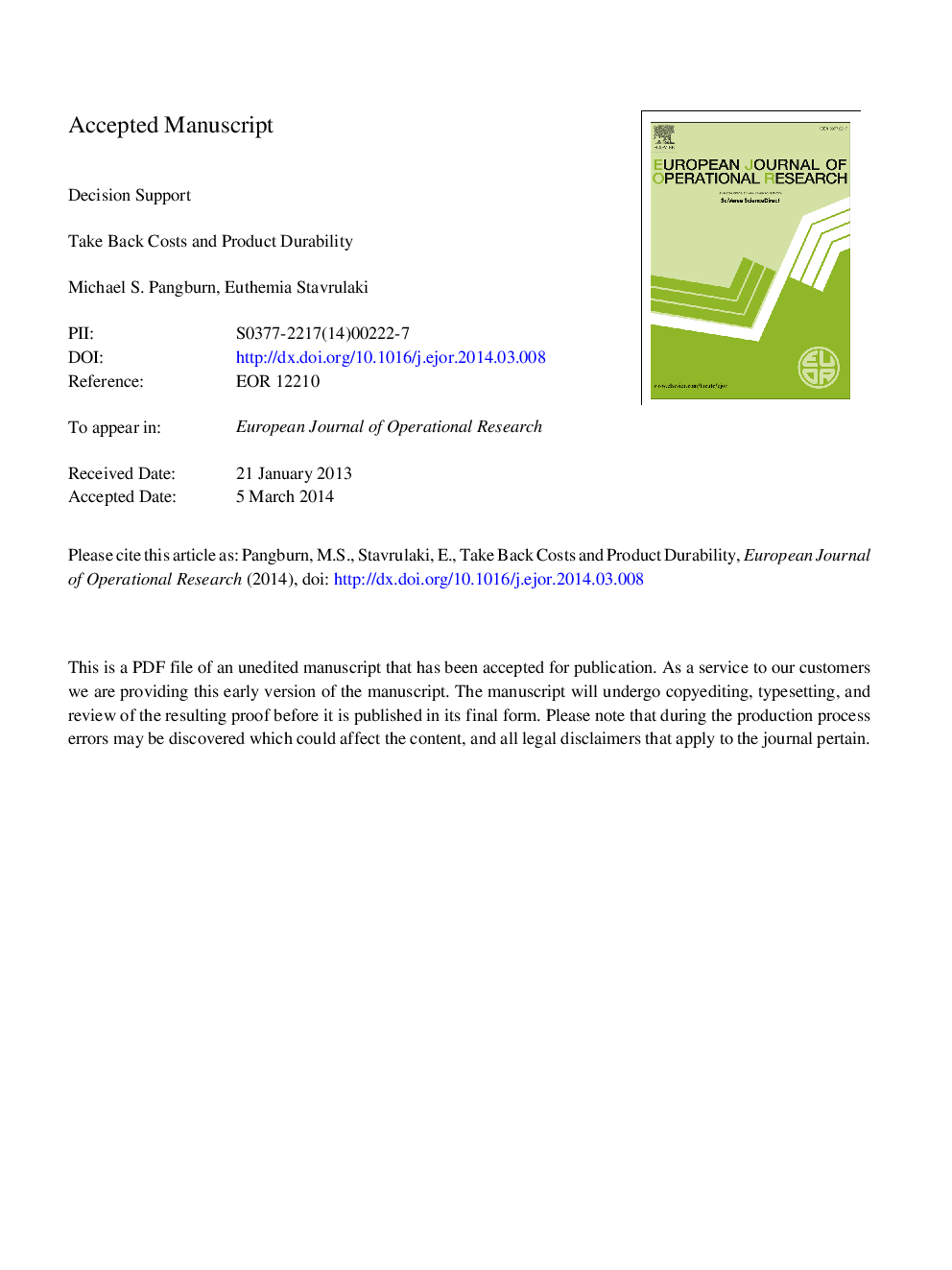| Article ID | Journal | Published Year | Pages | File Type |
|---|---|---|---|---|
| 6897300 | European Journal of Operational Research | 2014 | 30 Pages |
Abstract
Extended Producer Responsibility (EPR) initiatives may require a manufacturer to be responsible in the future for taking back the products it produces today. A ramification of EPR is that take back costs may influence firms' decisions regarding product durability. In the absence of EPR, prior literature has shown that a firm may intentionally lower durability, yielding planned obsolescence. We use a two period model to examine the impact of take back costs on a manufacturer's product durability and pricing decisions, under both selling and leasing scenarios. We show that compared to selling, leasing provides a greater incentive to raise durability, thus extending a classic insight to a setting with product take backs. Interestingly, we also show that it is possible for the optimal product durability to decrease if the stipulated take back fraction increases. In such situations, were the take back fraction tied to durability rather than a fixed fraction, we demonstrate durability can increase. We explore the impact of take backs on profits and surplus by alternatively considering products for which take back costs are either increasing or decreasing functions of durability. When increasing durability implies higher take back costs, our results demonstrate that leasing can increase durability, profits, and surplus significantly compared to selling. In contrast, when increasing durability implies a lower take back cost, there is a built-in incentive for the firm to increase durability, which can make selling more efficient (i.e., surplus enhancing) than leasing.
Related Topics
Physical Sciences and Engineering
Computer Science
Computer Science (General)
Authors
Michael S. Pangburn, Euthemia Stavrulaki,
